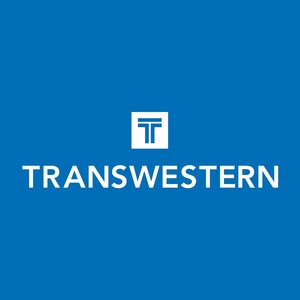Commercial Real Estate Sales On Pace To Nearly Match Last Year Amid Rebounding Employment
New Publication Outlines Considerations for Commercial Real Estate Owners and Tenants
HOUSTON, Sept. 24, 2014 /PRNewswire/ -- During the first half of 2014, the four major types of commercial property – office, industrial, multifamily and retail – have recorded $150.3 billion in sales volume. This total puts the nation on pace to nearly match last year's annual sales total of $312.6 billion. One of the principal drivers of this rebounding sales volume is job growth: the U.S. added 8.4 million payroll positions on a seasonally adjusted basis in the last five years, according to the third-quarter edition of "Insights + Trends + Opportunities" publication by Transwestern and its research affiliate, Delta Associates. Each edition of "Insights + Trends + Opportunities" features a review of the economic impact on commercial real estate and valuable information for commercial property owners, investors, tenants and developers.
COMMERCIAL REAL ESTATE
With rising employment, more workers should be in a position to form new households, gradually de-coupling from roommate situations to rent apartments. More new jobs and new households will increase demand for office space and multifamily units, as well as indirectly impacting retail and the distribution space that supports retail supply chains. Commercial real estate owners should keep in mind that while sales volume may not continue to rise at its recent pace, values are likely to continue increasing over the next few years. If interest rates rise, the number of potential buyers for each asset may decline. Therefore, planning an exit strategy today would be wise. On the other hand, if inflation increases, then holding commercial real estate as a hedge against inflation would be a viable choice. Tenants should be aware that as properties change hands in the next few years, they may have an opportunity to extend or renegotiate their lease for better terms.
LABOR ANALYTICS
C-level executives are increasingly focusing on labor analytics as a major factor in real estate decisions. Choosing the right location allows a firm to recruit talent from the labor pool best suited to serve the company's short- and long-term business objectives. Analyzing how accessible a potential site is for a firm's existing employee base is just the beginning of a much more detailed analytics process. Failure to fully evaluate a company's labor pool can result in overall higher costs. For example, a contact center selected a space that saved $10 per square foot on rent compared to a more costly, better-located option. The suboptimal location caused a 60 percent annual attrition rate, resulting in $1.74 million more in combined rent and attrition expenses compared to the pricier space.
GLOBAL REAL ESTATE SUSTAINABILITY BENCHMARK
ENERGY STAR® and LEED® certification may no longer be the only sustainability metrics commercial real estate owners track. Amsterdam-based Global Real Estate Sustainability Benchmark (GRESB) is gaining traction among many real estate owners seeking to gain a broader picture of sustainability performance for an entire portfolio. GRESB produces a ranking that measures building metrics on energy, water and waste; portfolio-wide performance; and corporate sustainability practices of real estate owners and investment funds. Findings can elevate the profile of a property or portfolio for sustainable-minded investors and assist owners in determining the potential lifespan of an asset. GRESB data demonstrating how assets have been maintained could someday increase the properties' attractiveness and value when they come to market.
DEVELOPMENT SPOTLIGHT
Sometimes the smallest development in a mammoth logistics park can have the most far-reaching impact. Such is the case with a 700-foot by 70-foot refrigerated building outside Chicago. The building is leased by National Logistics and Cold Storage (NLCS) and used by TransCold Express, the first refrigerated boxcar unit train connecting the Midwest and West Coast in more than half a century. The unit train pulls up to one side of the refrigerated facility while refrigerated trucks pull up to the other side, and the cargo is transferred from one side to the other. The facility's design is perfect for the unique task, which has the potential to change how fresh produce and other products are transported across the country. The rail service is more environmentally friendly and cost effective than trucking, saving between 5 and 25 percent in cost. Additionally, the cold storage facility is part of a RidgePort Logistics Park, a 1,500-acre industrial park. RidgePort presented the ideal location for the TransCold Express Midwest hub in part because of its ample room for clients of the rail service to develop ancillary distribution facilities.
Download the full publication here: http://twurls.com/insights3q14
ABOUT TRANSWESTERN
Transwestern is a privately held real estate firm specializing in agency leasing, property and facilities management, tenant advisory, capital markets, research and sustainability. The fully integrated global enterprise leverages competencies in office, industrial, retail, multifamily and healthcare properties to add value for investors, owners and occupiers of real estate. As a member of the Transwestern family of companies, the firm capitalizes on market insights and operational expertise of independent affiliates specializing in development, real estate investment management and research. Transwestern has 34 U.S. offices and assists clients through more than 181 offices in 40 countries as part of a strategic alliance with Paris-based BNP Paribas Real Estate. For more information, please visit transwestern.com and follow us on Twitter: @Transwestern.
Media Contact:
Stefanie Lewis
713.272.1266
[email protected]
SOURCE Transwestern
WANT YOUR COMPANY'S NEWS FEATURED ON PRNEWSWIRE.COM?
Newsrooms &
Influencers
Digital Media
Outlets
Journalists
Opted In





Share this article